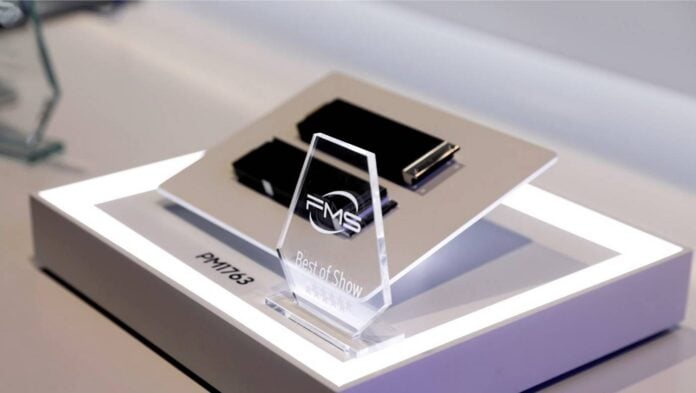Samsung has unveiled its upcoming enterprise SSDs during the Global Memory Innovation Forum in China, promising super-high capacities and next-gen speeds. The brand’s roadmap lists Gen 6 SSDs for next year, and high-density drives for 2027.
Starting with the fast one, Samsung is preparing the PM1763, a PCIe 6.0 SSD for servers and datacentres boasting 30GB/s transfer speed. Available in the E1 form factor, this blazing-fast storage solution is a prime candidate for high-throughput tasks such as caching and data analysis. It could also boost the perceived performance of slower storage units by interfacing between it and main system memory.
To enable such performance, Samsung is leveraging a 16-channel controller that offers double the speed of existing solutions, connected to the CPU via a PCIe 6.0 x4 link. This means that the advertised 30GB/s transfer speed is already at the limit of what possible on this interface, which is impressive considering that Gen 6 SSDs have yet to release. For comparison, Gen 5 SSDs took some time to reach their maximum potential, especially in the consumer segment where early models suffered from power and heat problems.
Speaking of which, Samsung has indicated that the drive consumes about 25W, making it 60% more efficient than previous solutions. This combination of features netted the PM1763 the Best of Storage award at the Future of Memory and Storage 2025 event.
The PM1763 will have to compete with Micron’s 9650 SSD which also promises outstanding performance, said to reach up to 28GB/s in sequential read and 14GB/s in sequential write. This won’t be an easy task despite the PM1763’s higher advertised specs, since pricing or TCO (total cost of ownership) will weigh heavily in any acquisition decision.
In parallel, Samsung has also laid out its plans to launch super-high-capacity SSDs powered by QLC NAND, offering 256TB of capacity at Gen 5 speeds, and 512TB at Gen 6 speeds sometime later. Such a solution is as valuable as the PM1763, allowing for much denser server clusters and potentially lower maintenance cost per terabyte of capacity. Such a capacity will likely put the final nail in the HDDs’ coffin, as the latter struggle to cross the 40TB mark, with 100TB not expected before 2030.
Now regarding mainstream platforms, we shouldn’t expect these Gen 6 SSDs anytime soon, as CPUs and motherboard have yet to debut PCIe 6.0 support. And besides, Gen 5 M.2 SSDs are already plenty fast for home and creative use, with many games and apps still unable to take full advantage of them. That said, we surely won’t mind seeing a 256TB option as we are starting to wonder if we’ll ever leave the 8TB limit.

